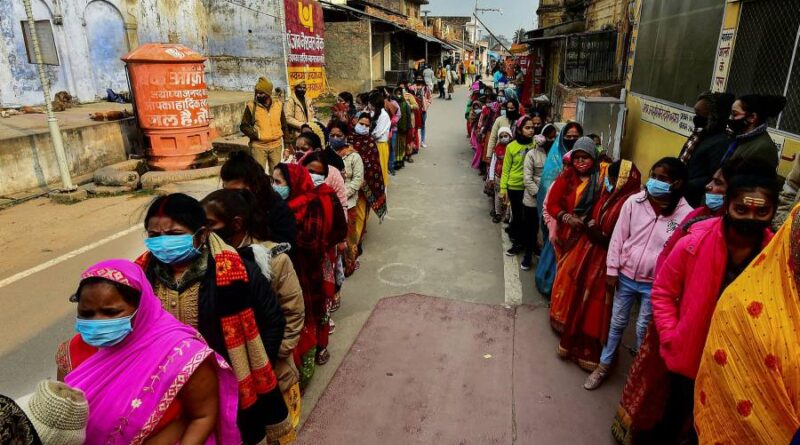India’s uneven economic rebound creates winners and losers
Every morning at 5am, Ajit Yadav sets off to collect milk from the small farms dotted around the village of Karkhiyaon in the Indian state of Uttar Pradesh. The steel vats clatter against his weathered Honda motorcycle as he rides to a waiting truck that transports the milk to Varanasi, a city some 25km away.
Nearby, preparations have begun on a potentially transformative project: a $40mn dairy processing plant owned by Amul, one of India’s largest co-operatives. The company says the plant will boost incomes for thousands of nearby families, many of whom own dairy cows, and create many more new jobs.
Yadav, 21, has become disillusioned with the job market, however. He already left a job at a money lender in India’s capital New Delhi, fed up with the low pay and rough urban living conditions. He says he prefers his village milk round to working for another business. “People have to rely on whatever they can do to earn a living,” he says. “I don’t have any major dreams.”
Projects such as the Amul plant, at which prime minister Narendra Modi laid the foundation stone in December, are a key plank of the government’s plan to revive India’s ambitions of economic superpower status by transforming neglected rural areas into industrial hubs.
Two years after the coronavirus pandemic plunged the country of 1.4bn into a devastating recession, India is now the fastest-growing large economy in the world. The IMF expects India to grow 9 per cent this year, with economic activity rebounding after a mild Omicron infection wave. Corporate profits have surged, as has tax revenue.
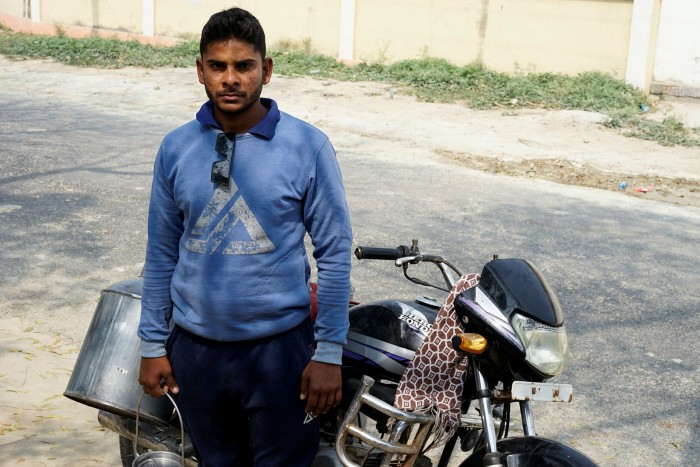
Yet this bullish mood conceals a deeper malaise in India’s economy, where the vast informal sector of small farms and businesses accounts for about half of gross domestic product and up to 80 per cent of jobs.
Unemployment has risen to 8 per cent from lows of about 3 per cent in 2017, according to research group the Centre for Monitoring Indian Economy, with participation in India’s labour force declining as job opportunities dry up. Workers such as Yadav have quit India’s cities for villages, a reverse migration that defies economic theory.
There is “a huge dichotomy happening”, says Farida Khambata, a co-founder of investment group Cartica and former executive at the International Finance Corporation. “The formal index can do exceedingly well and the formal economy can start showing signs of life and growth, and you can have another side of India which is hurting.”
Fortunes at the top and bottom of India’s economy have diverged sharply. A household survey conducted by People Research on India’s Consumer Economy (Price), a think-tank, last year found incomes for the richest quintile of households have risen 39 per cent since 2016, while those for the poorest quintile collapsed 53 per cent. Low- and middle-income Indians have also suffered unprecedented declines in their incomes.

“The rich have been the beneficiaries of all the tax and monetary stimulus,” says Viral Acharya, former deputy governor of the Reserve Bank of India and a New York University economist. The lopsided recovery “is not going to be enough to bring GDP to levels commensurate with pre-pandemic trends”.
The lack of jobs has become a burning campaign issue in several key state elections taking place this year. The results, reported on March 10, will serve as a referendum on whether voters trust Modi’s Bharatiya Janata Party (BJP) to push the economy in the right direction after almost eight years in power.
The most important of these elections is in Uttar Pradesh, where the BJP controls the state government. With more than 200mn people, it is not only India’s largest state but equivalent in population to the world’s biggest countries. Yet it remains among India’s least developed states, scoring near the bottom on metrics such as poverty, nutrition and child mortality.
The BJP is pouring money into infrastructure in the hope that stimulating the corporate sector will lead to private investment, manufacturing and jobs. It wants to make Karkhiyaon, located in Modi’s Varanasi parliamentary constituency, an exemplar of this growth model. The Amul plant is part of a fledgling industrial hub alongside companies including biscuit maker Parle that have also built factories near the highway.
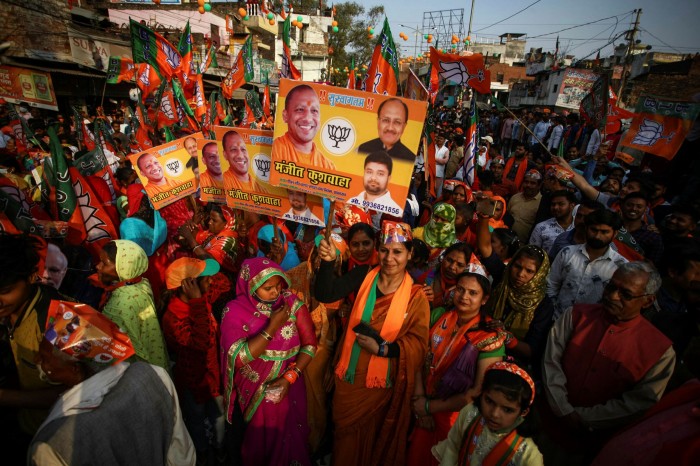
But analysts increasingly question Modi’s belief that a rising tide will raise all boats. Pratap Bhanu Mehta, a senior fellow at the Centre for Policy Research, says evidence that a strong corporate sector was benefiting the wider economy was becoming less clear.
The BJP believed that “for India to be competitive, what you needed to do was build infrastructure. That was part of the Chinese strategy,” he says. “But in a sense a lot of the benefits of that go largely to the already existing organised sector . . . The missing link is how does that competitiveness at the top actually translate into job growth.”
Booming corporate sector
Since his election in 2014, Modi and the BJP have thrived electorally by deftly blending Hindu nationalist identity politics with welfare for the poor and a pro-business platform. Modi came to power promising to improve the ease of doing business, to boost foreign investment and to deliver big reforms.
Their success on those counts has varied, however. An idiosyncratic demonetisation policy in 2016, invalidating most hard currency to force unregulated cash into the financial sector, caused chaos across the economy. Agricultural reforms intended to modernise the government-regulated industry were scrapped last year after fierce opposition by farmers. A new sales tax code introduced in 2017 was painful for businesses but has boosted collections.
At the same time, Modi championed direct benefit transfers and provision of utilities such as cooking gas and electricity to the poor, helping improve living standards. Schemes to create bank accounts, coupled with the spread of cheap mobile phones, have led to rapid uptake of financial and digital services.
Yet even before the pandemic India’s growth rate had halved from more than 8 per cent in 2016 to 4 per cent in 2019, while a strict lockdown in 2020 plunged the economy into a historic recession.
While the government expanded food rations and rural employment schemes for the poorest, it channelled stimulus towards the corporate sector in the expectation that stronger businesses would invest, create jobs and boost consumption.
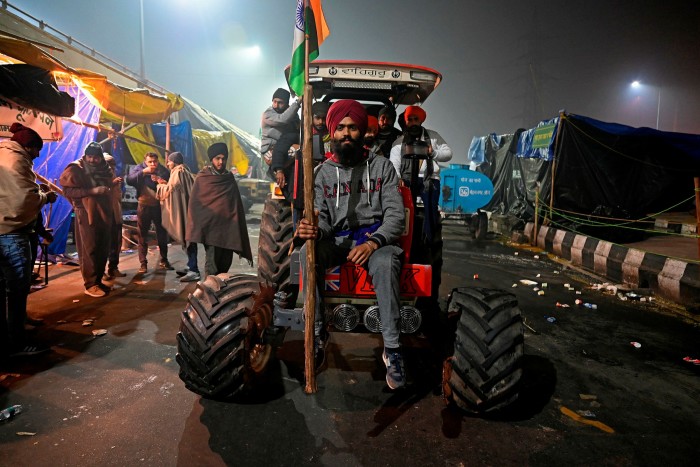
This included a corporate tax cut in 2019, record-low interest rates and a temporary moratorium on bank loan repayments. In its annual budget released last month, it unexpectedly cut social spending while outlining a record Rs7.5tn ($99bn) in capital investment for infrastructure over the coming year.
Nirmala Sitharaman, India’s finance minister, argued that every rupee of capital expenditure would yield 2.45 rupees in subsequent spending. The infrastructure push “has a big multiplier effect”, says Ila Patnaik, a former principal economic adviser to Modi’s government. “You can’t keep spending on welfare programmes and not try and push capex.”
India’s corporate sector has thrived as a result of the BJP’s supply-side approach. Listed companies reported record profits during the pandemic and unorganised sectors such as textiles or hospitality have rapidly consolidated. The largest four companies gained market share in all but one of 17 industries tracked by Axis Bank.
The dairy co-operative Amul, for example, enjoyed record sales in 2021 as it gained share from unbranded dairy products. The larger scale allowed it to continue operating more easily during lockdowns, says Rupinder Singh Sodhi, Amul’s managing director, adding he expected growth of nearly 20 per cent this year too.
“People shifted from unorganised, loose brands of dairy products to trusted, visible and available brands,” he says. “Not for a single day Amul distribution or supply chain stopped . . . When nothing was moving, our milk tankers were.”

The success of India’s formal sector has created opportunities previously unimaginable for Sushmita Sahu. The 22-year-old university graduate in nearby Varanasi started last year as a salesperson in a new showroom for Royal Enfield, one of the country’s top motorcycle brands.
Like many women in a deeply patriarchal society, Sahu says her family were reluctant to let her go to work, fearful for her safety while commuting and in the workplace. Fewer than one in 10 working-age women are in the labour force, according to CMIE, among the world’s lowest rates.
But she says the showroom is the kind of space she and her friends feel confident to join the labour force. “They value talent,” she says. “Girls like me need a secure environment in which we can work comfortably.”
Informal workers suffer
Many economists fear Sahu’s experience is the exception, pointing to widespread distress in the ubiquitous informal sector.
Even before the pandemic, India was struggling to create enough jobs to keep up with population growth. About 1.8mn people join the working age population every month, according to CMIE.
And yet despite this fast-growing pool the labour force participation rate fell from 46 per cent in 2017 to 40 this year, CMIE says.
The pandemic dealt a deep blow to India’s informal sector, where workers are often daily-wage earners without any social safety net. The nationwide lockdown imposed by Modi’s government in March 2020 put millions out of work effectively overnight, prompting an exodus of migrant labourers from cities such as Delhi and Mumbai to their rural homes.

Informal businesses often dependent on cash had already been hit “very, very badly” by demonetisation, says Pronab Sen, India’s former chief statistician. “They had just about started coming back when the first lockdown happened.”
There is little data available on migration patterns but S Irudaya Rajan, chair of the International Institute of Migration and Development, estimates that as many as a third are yet to return to cities. As a result the share of labour in agriculture has surged as urban workers return to farming.
“Development theory tells you that people move out of the agricultural sector and into the modern sector,” says Radhicka Kapoor, a fellow at the Indian Council for Research on International Economic Relations (ICRIER), a think-tank. “For the first time, we’re seeing a reversal of that process.”
Kapoor says she thought this was temporary but “we need to make a conscious effort to ensure that there’s an expansion of opportunities.”
In Uttar Pradesh, where electoral success for the BJP is seen as vital to retaining the upper hand nationally, the state’s unemployment rate is a better-than-average 2.7 per cent. But that does not account for people who have simply given up looking for work; according to CMIE, labour force participation is even lower in Uttar Pradesh than nationally.

The lack of jobs has become one of the opposition’s attack lines. “The BJP have spent the last five years holding investment conferences while industries shut down and people became jobless,” says Rajendra Chaudhary, a spokesperson for the rival Samajwadi Party.
But the BJP, who are still favourites to win, deny there is a jobs crisis. Mahendra Singh Gautam, a BJP co-ordinator in Varanasi, argues that voters are motivated by more than just the economy. In Uttar Pradesh, led by hardline Hindu monk Yogi Adityanath, the BJP has championed projects to build temples at historical sites contested between Hindus and Muslims.
The BJP and Adityanath portray themselves as defenders of the Hindu majority, but human rights groups say their sectarian rhetoric has fuelled discrimination and empowered hardline Hindu groups to threaten and harass the country’s large Muslim minority.
“The BJP is a Hindu party. It is marching with all Hindus, taking them along with it here and nationally,” Gautam says.
Rakesh Kumar, who manages a textiles shop in Uttar Pradesh’s capital Lucknow, says his cash-based business has struggled ever since demonetisation. Sales are now about half of pre-Covid levels, though slowly improving. “It’s not as if they have been great,” he says, of the state government. “But the BJP is perhaps the best option.”
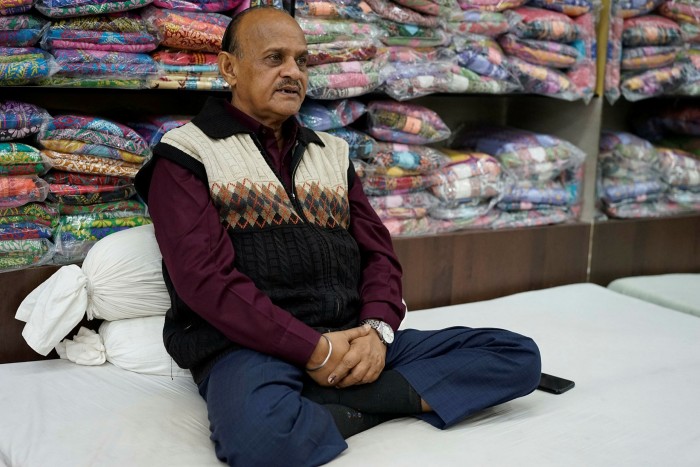
Yet unless Modi can turn the informal sector around he risks alienating the Hindu voters who make up the core of his base. There’s little evidence his policies are creating the kinds of jobs they need. Private investment as a share of GDP has fallen over the past decade, for example, and schemes to boost manufacturing have so far had mixed results.
While tariffs and incentives have helped spur production of goods such as smartphones, manufacturing as a percentage of GDP has declined since Modi came to power. Advances in automation are also allowing factories to operate with fewer workers.
Good jobs have eluded Santosh Kumar Rai. He worked at the biscuit factory in Karkhiyaon after giving up on life as a migrant labourer in Delhi. But the work, paying about Rs8,000 ($105) for a month of 12-hour shifts, was so miserable he quit to set up a snack stall on the dusty strip outside, selling fried samosas to former colleagues.
Even so, like many in the country’s pious heartland, he remains cautiously loyal to Modi’s party — but, these days, more in hope than in expectation. “Nothing really happens on the ground. But I have always voted for the BJP and I will still do,” he says. “Leaders must focus on development for people. I just hope they understand that.”

